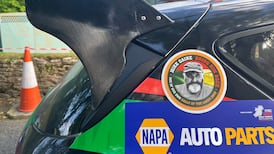The guide books will tell you Cancun was selected by computer in the early 1970s to develop the tourist industry for the Mexican economy. Situated on the Yucatan peninsula on the most eastern part of Mexico, it must be one of the most beautiful strips of land in the world lying between the Caribbean sea and a tropical lagoon. Once selected it grew and grew and now measures over 12 miles with hotels, bars, discos and shopping malls. It generates 25 per cent of Mexico's hard currency.
It is very easy to let indolence set in once you have arrived in Cancun. It is mega-hot and the 11-hour flight from Dublin can leave you flaked out. Add to that the attractions of a purpose-built resort with its beaches, swimming pools and hundreds of restaurants, cafes and bars, and the temptation is just to forget that there is a real country out there. But make the effort, it is worth it.
But for the first few days we flopped in the middle of the hotel zone. In June, US college students, known as "Spring Breakers" were everywhere. They had just finished their academic year and their mood, to say the least, was celebratory. Licensing laws are strict in the US so they come to Mexico to take advantage of Cancun's easygoing attitude to alcohol. They hailed from Arkansas, Louisiana and Texas and were determined to party all day. We met a preacher who told us the most hair-raising stories of what these young people were up to. He was there to "save" them.
The hotel area has huge shopping malls which include restaurants like McDonalds, Planet Holywood and the Hard Rock Cafe. Eating, as well as drinking, is a frenzied activity in Cancun and the waiters vie for your custom. A Rain Forest restaurant, with giant plastic tigers, snakes and exotic birds, was the latest to open while we were there.
By day three, we were ready to explore. Cancun must have the best bus service in the world. With a frequency of about a minute, a bus will bring you downtown for just 4 pesos (25p). This is where the Mexican community that services the tourist industry, lives. It too was created in the 1970s but it has the feel of a real town - and the price of food and drink in the bars and restaurants is half that of the hotel area.
Isla Mujeres (Island of Women) was a delightful discovery. We were given numerous explanations as to how the name came about. One was that Spanish pirates kept their lovers on the island while they went off and plundered ships and ports. Archaeologists have found clay female figures and believe the island was a stopover for the Maya en route to worship their goddess of fertility, Ixchel, on the nearby island of Cozumel.
We took the bus to Puerto Juarez and had the choice of a fast or slow ferry to cross to the island. When we saw a Mariachi band boarding the slow boat we followed suit. It was just 11 a.m. but they played passionate Latin American music that made us want to dance on deck.
Unlike Cancun, normal life goes side by side with tourism on Isla Mujeres and you see local children and old people. The buildings have been painted in dazzling bright colours to complement the aquamarine sea. We went there three times - on the first occasion we took a "water taxi". While snorkelling, we found the sea delightfully warm, and fish of all shapes and sizes buffeted around us. Paradise. We hired a golf car on another day and ate a meal, cooked by a Cuban family, that I will never forget. Lime soup, followed by fish in a sauce of chillies and olives and washed down by ice cold beer.
Chichen Itza is the largest and most famous of the Mayan ruins. We were lucky enough to get an enthusiastic guide who had worked on some of the restoration.
The most famous of the ruins is Castillo of Kukulcan, a pyramid which is actually an astronomical clock. The combined steps on each side plus the top platform total 365. We climbed one side - 91 steps. Going up was easy and the view of the surrounding countryside was spectacular but coming down was daunting. I had to edge down backwards holding on to a chain. I was stiff for two days afterwards. But in retrospect it was certainly one of the highlights of the holiday and the sheer magnitude of the settlement was awesome. We had read in the guide books about cenotes. They are outlets of fresh water in limestone rock and the original inhabitants of the Yucutan would have made their first settlements near a cenote so that they had fresh drinking water. Because they provided such an important and basic natural resource cenotes feature in religious rituals. We were told how they would toss young virgins in to appease the fertility gods. The 13-year-old female with us was decidedly nervous.
Cenote Azul is mentioned in all the guide books yet it remains quiet and undisturbed. Surrounded by thick leafy vegetation which acts as a shield from the hot sun, the water is cold and crystal clear. We swam with fish all around us. They were all colours and sizes and nibbled our feet. We enjoyed all this with a Mexican family who were happy to practise their English on us. When we told them we were Irish they told us that a former president of Mexico is currently residing in Dublin. Carlos Salinas de Gortari must miss his wonderful country terribly.







